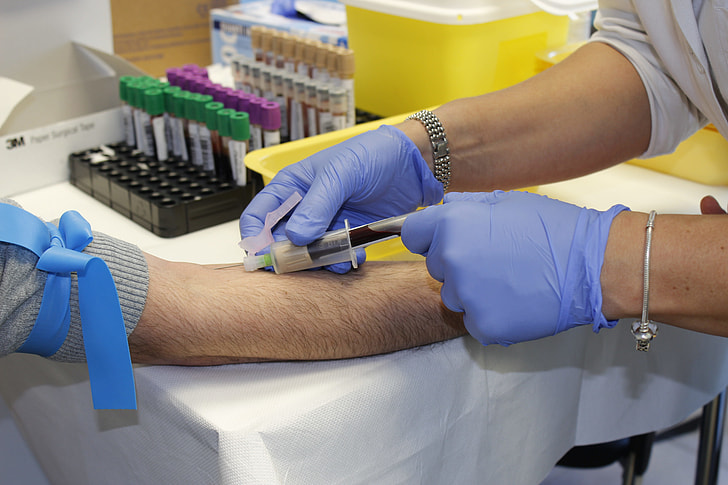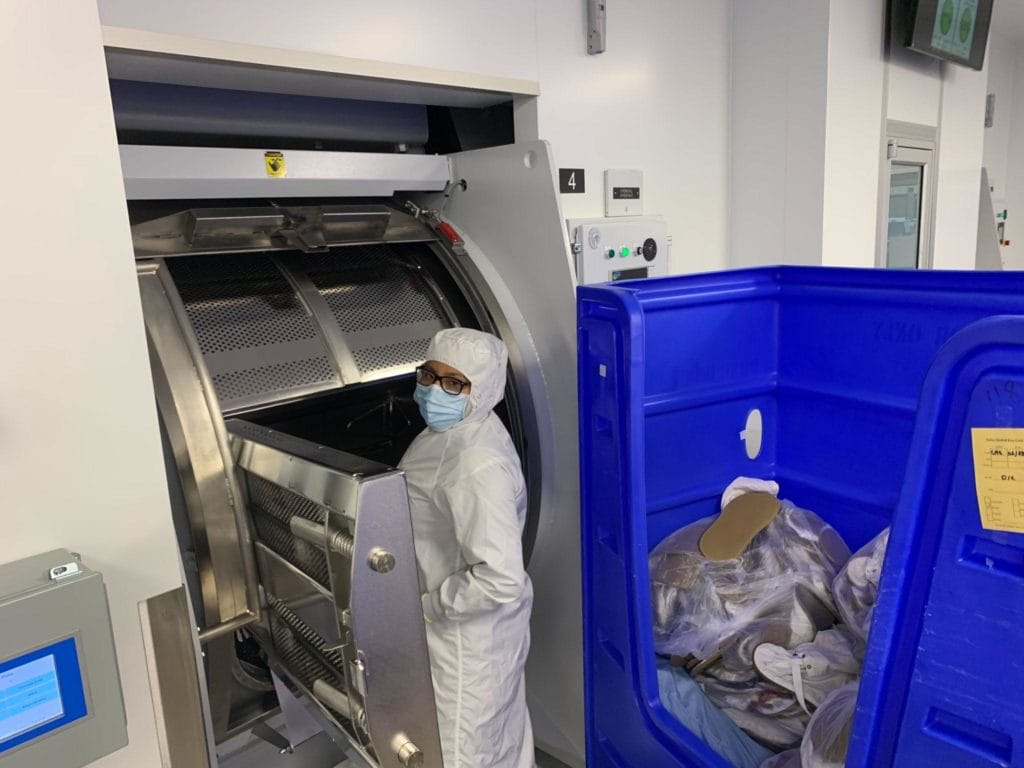
Global PPE projects are increasingly under scrutiny for their environmental, social, and governance (ESG) compliance. From sourcing raw materials to manufacturing, distribution, and end-of-life disposal, PPE products have measurable impacts on carbon footprint, social responsibility, and corporate governance. Organizations engaging in large-scale PPE procurement or manufacturing are expected to align with ESG frameworks to meet regulatory, investor, and stakeholder expectations.
This guide combines Part 1 (ESG fundamentals and standards in PPE) and Part 2 (implementation strategies, case studies, and ROI) to provide a complete decision-making toolkit for ESG-compliant global PPE projects.
ESG standards in global PPE projects ensure responsible sourcing, sustainable production, worker safety, and transparent governance.
Key areas include compliance with ISO 14001 (environment), ISO 45001 (occupational health & safety), social responsibility audits, fair labor practices, and transparent supply chain governance.
1. Why Global PPE Projects Require ESG Compliance
1.1 Environmental Concerns
- PPE production involves synthetic materials, chemicals, and energy-intensive processes.
- Single-use items like masks, gowns, gloves, and aprons contribute to landfill accumulation and microplastic pollution.
- Carbon emissions arise from production, transportation, and disposal, particularly in international supply chains.
- ESG-focused procurement emphasizes recycled materials, circular economy approaches, and energy-efficient manufacturing.
Example: A large European PPE manufacturer reduced CO₂ emissions by 28% over 2 years by switching to rPET and biodegradable polymers for disposable gowns.
1.2 Social Responsibility
- PPE projects affect workers’ rights, labor conditions, and community impact.
- Compliance with ILO conventions ensures fair wages, safe working environments, and no forced or child labor.
- Socially responsible PPE projects also focus on local sourcing, community engagement, and ethical labor practices.
Example: A multinational PPE supplier implemented SA8000-compliant audits across 15 factories in Asia, preventing labor violations and increasing worker retention by 15%.
1.3 Governance and Transparency
- Strong governance ensures ethical procurement, anti-bribery compliance, and accurate reporting.
- Stakeholders and investors increasingly demand visibility into the full PPE supply chain, including subcontractors.
- Governance mechanisms, such as OECD Guidelines and UN Global Compact adherence, protect companies from reputational and legal risks.
1.4 Regulatory Pressure
- Governments, NGOs, and international buyers are embedding ESG metrics into PPE tendering and contract evaluation.
- ESG non-compliance can lead to contract rejection, fines, or delayed shipments, impacting revenue and market access.
2. Relevant ESG Standards for Global PPE
| Aspect | Relevant Standard / Framework | Purpose |
|---|---|---|
| Environment | ISO 14001, GRI, CDP | Minimize environmental impact, track sustainability metrics |
| Occupational Safety | ISO 45001, OSHA, EN ISO 20345 | Ensure worker safety, reduce accident risk |
| Social Responsibility | ILO conventions, SA8000 | Protect workers’ rights and fair labor practices |
| Governance | OECD Guidelines, UN Global Compact | Ensure ethical operations, anti-bribery, transparency |
| Circular Economy | ISO 14021, GRS, rPET certifications | Promote recycling, reuse, and sustainable materials |
| Product Safety | CE marking, FDA, EN standards | Ensure PPE meets hygiene, chemical, and mechanical protection standards |
3. Material Selection: ESG-Conscious Choices
| Material Type | ESG Advantages | Limitations |
|---|---|---|
| Recycled Polyester (rPET) | Reduces landfill waste, lower carbon footprint | May have lower durability if poorly processed |
| Biodegradable PPE | Minimizes post-use pollution | Higher cost, limited chemical resistance |
| Organic Cotton | Sustainable cultivation, reduced pesticide use | Less abrasion resistance in some PPE |
| PU/PVC Coatings | Reusable, chemical-resistant | Synthetic production can be energy-intensive |
| Non-Woven Recyclable Fabrics | Single-use PPE recyclability | Requires dedicated recycling channels |
| Hybrid Blends | Combining recycled and bio-based fibers | Complexity in recycling at end-of-life |
ESG Tip: Material choice should consider entire lifecycle impact, from production to disposal, not just upfront cost.
4. Case Study Comparisons by PPE Segment
| Segment | ESG Risks | ESG Focus | Outcome When Implemented |
|---|---|---|---|
| Medical PPE | Single-use plastic waste, chemical exposure | Recycled gowns, safe disposal | 40% reduction in landfill waste, maintained hygiene compliance |
| Industrial PPE | Chemical-resistant gloves, boots, aprons | Durable, recyclable materials | Extended product lifespan, lower replacement costs |
| Construction PPE | High wear & tear, sourcing issues | Supplier audits, fair labor practices | Zero labor violations, improved brand trust |
| Laboratory PPE | Hazardous chemicals, worker safety | ISO 45001 compliance, training | 50% reduction in incident reports, ESG compliance achieved |
| Mining PPE | Extreme conditions, high material consumption | Circular PPE, robust durability | Reduced material consumption by 30%, fewer replacements |
| Food Processing PPE | Contamination risk, hygiene | Biodegradable aprons, rPET gloves | 35% reduction in single-use plastics, improved audit scores |
Insight: ESG implementation varies by PPE type. High-impact areas include single-use items, chemically-treated PPE, and high-consumption environments.
5. Common ESG Compliance Mistakes in PPE Projects
| Mistake | Impact | Prevention Tip |
|---|---|---|
| Focusing solely on cost | Low-grade materials increase environmental and social risks | Evaluate TCO and ESG impact, not just purchase price |
| Ignoring supply chain audits | Potential labor violations and reputational damage | Require independent ESG audits |
| Neglecting end-of-life | PPE waste contributes to landfill and pollution | Implement take-back, recycling, and circular programs |
| Overlooking employee safety training | Higher workplace incidents | Enforce ISO 45001-aligned training programs |
| Limited reporting | Cannot demonstrate ESG compliance to regulators | Use digital dashboards and standardized reporting frameworks |
| Selecting non-certified materials | Risk of chemical hazards or poor recyclability | Prioritize ISO, GRS, and FDA verified materials |
Example:
A global PPE supplier moved from virgin plastic gowns to rPET and bio-based gowns. Unit cost increased 12%, but lifecycle waste decreased 45%, regulatory compliance improved, and customer satisfaction rose.
6. ROI Analysis: ESG-Compliant vs Non-Compliant PPE Projects
| Scenario | Non-ESG PPE Cost | ESG-Related Losses | ESG-Compliant PPE Cost | Savings / ROI |
|---|---|---|---|---|
| Regulatory fines for non-compliance | $5,000 | $50,000 | $10,000 | $40,000 |
| Brand reputation loss / recall | $3,000 | $200,000 | $6,000 | $194,000 |
| Waste management inefficiency | $2,000 | $25,000 | $4,000 | $23,000 |
| Workplace incidents | $1,500 | $30,000 | $3,000 | $28,500 |
| Supply chain audit failures | $1,000 | $15,000 | $2,500 | $12,500 |
Key Insight: ESG investment may slightly increase upfront costs but yields substantial savings, risk reduction, and long-term sustainability benefits.
7. Buyer Checklist for ESG-Compliant PPE Procurement
- [ ] Environmental: Recycled, biodegradable, or low-impact materials
- [ ] Social: Supplier audits, fair wages, worker safety policies
- [ ] Governance: Transparent supply chain, anti-corruption compliance
- [ ] Certification: ISO 14001, ISO 45001, SA8000, GRS, rPET verification
- [ ] Circularity: Take-back and recycling programs
- [ ] Tracking: Digital dashboards for ESG reporting
- [ ] Training: Employee engagement on ESG and safety compliance
- [ ] Material Testing: Chemical resistance, durability, and recyclability
- [ ] Documentation: Maintain evidence for audits and tenders
- [ ] Continuous Improvement: Monitor KPIs and ESG goals annually
8. Frequently Asked Questions (FAQ)
Q1: Can ESG compliance increase PPE costs?
A: Yes, initially. Lifecycle savings, risk mitigation, and enhanced brand trust usually outweigh upfront costs.
Q2: How to verify supplier ESG compliance?
A: Request certifications (ISO 14001, SA8000), conduct independent audits, and review supply chain transparency.
Q3: Which PPE items have the highest ESG impact?
A: Single-use gowns, masks, gloves, and chemically-treated fabrics are most impactful.
Q4: How does ESG compliance affect procurement eligibility?
A: Many global tenders now require verified ESG compliance, failing which bids may be disqualified.
Q5: How can organizations integrate ESG tracking?
A: Digital dashboards, KPI monitoring, and supplier scorecards enable continuous ESG oversight.
Q6: What role does circularity play in PPE ESG?
A: Reuse, recycling, and take-back programs drastically reduce waste, lower carbon footprint, and improve ESG reporting metrics.
9. Advanced ESG Sourcing Strategies for PPE
-
Supplier ESG Audits:
Evaluate environmental impact, labor practices, and governance structures. -
Circular PPE Programs:
Implement rental, reuse, and recycling models to reduce waste. -
Digital Monitoring:
Use IoT, RFID, or QR tracking to monitor PPE usage, hygiene, and ESG compliance. -
Employee Training:
Align workforce behavior with ESG goals through onboarding and periodic training. -
ESG Reporting:
Adopt standardized reporting frameworks such as GRI, CDP, or ISO 26000. -
Lifecycle Assessment (LCA):
Evaluate environmental impact from raw material sourcing to end-of-life disposal. -
Multi-Site ESG Coordination:
For multinational projects, standardize ESG requirements across factories and warehouses. -
Supplier Incentive Programs:
Encourage ESG compliance with rewards for meeting targets, reducing risk and improving supply quality.
10. Future Trends in ESG for PPE
- Smart PPE: Integration of sensors for usage, contamination detection, and environmental monitoring.
- Advanced Sustainable Materials: Bio-based polymers, hybrid recycled fabrics, and modular PPE design.
- AI & Predictive Analytics: Forecast PPE wear, optimize rotation, and minimize wastage.
- Expanded ESG Reporting: ESG KPIs become core to corporate and investor reporting.
- Collaborative Circular Economy: Regional hubs for collection, recycling, and redistribution of PPE.
- Regulatory Evolution: Stricter international ESG mandates and tender requirements.
11. Conclusion
Global PPE projects are no longer just about safety and compliance; they must incorporate environmental sustainability, social responsibility, and transparent governance. ESG standards:
- Mitigate environmental and social risks
- Enhance brand trust and market competitiveness
- Reduce total lifecycle costs through efficient, sustainable PPE
- Ensure eligibility for international procurement and tenders
ESG-compliant PPE is the future of responsible procurement, aligning corporate goals with global sustainability standards.
📩 Need help implementing ESG-compliant PPE programs?
Email: [email protected]
🌐 www.workwearsolutions.net
Zion Zhang
Recent Posts
 From Silver Ions to Copper Threads: Comparing Antimicrobial Technologies2025年11月20日Modern food processing and pharmaceutical manufacturing […]
From Silver Ions to Copper Threads: Comparing Antimicrobial Technologies2025年11月20日Modern food processing and pharmaceutical manufacturing […] Antimicrobial Fabrics: The Hidden Hero in Food & Pharma PPE2025年11月20日Food and pharmaceutical production environments demand the […]
Antimicrobial Fabrics: The Hidden Hero in Food & Pharma PPE2025年11月20日Food and pharmaceutical production environments demand the […] Case Study: How a Mining Firm Switched to 100% Recycled Fabrics2025年11月20日A major mining company successfully transitioned from […]
Case Study: How a Mining Firm Switched to 100% Recycled Fabrics2025年11月20日A major mining company successfully transitioned from […] Europe’s Circular Workwear Trend: What Emerging Markets Can Learn2025年11月19日The European workwear industry is increasingly embracing […]
Europe’s Circular Workwear Trend: What Emerging Markets Can Learn2025年11月19日The European workwear industry is increasingly embracing […] Circular Workwear Programs: How Rental & Recycling Models Cut Waste2025年11月19日Circular workwear programs are transforming the traditional […]
Circular Workwear Programs: How Rental & Recycling Models Cut Waste2025年11月19日Circular workwear programs are transforming the traditional […] Recycled Polyester & rPET Workwear: Green Solutions for 20252025年11月19日The global transition toward circular manufacturing and […]
Recycled Polyester & rPET Workwear: Green Solutions for 20252025年11月19日The global transition toward circular manufacturing and […]
CONTACT US
- Feel free to contact us any time. We will get back to you as soon as we can!
- +86-17303331701
